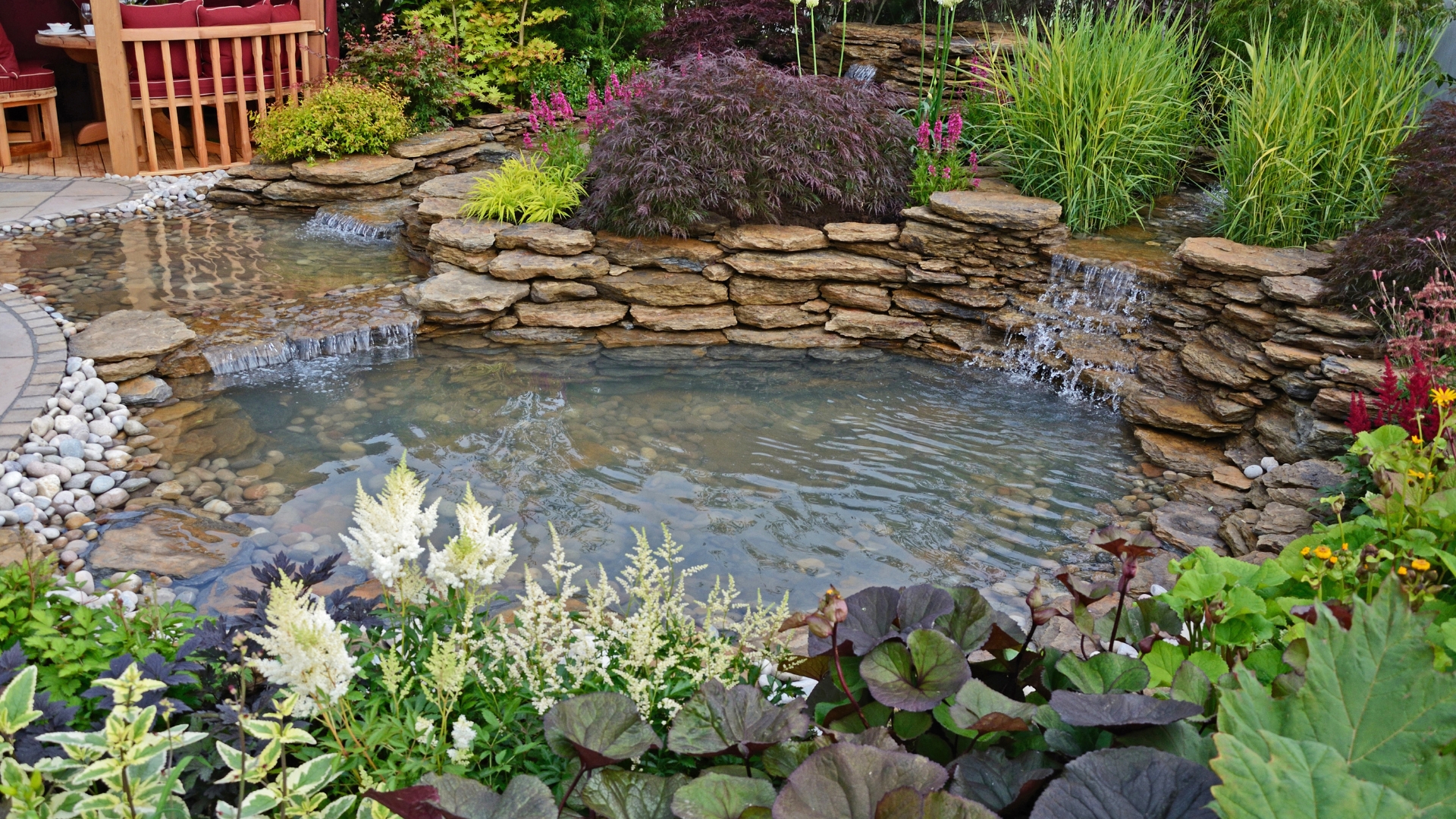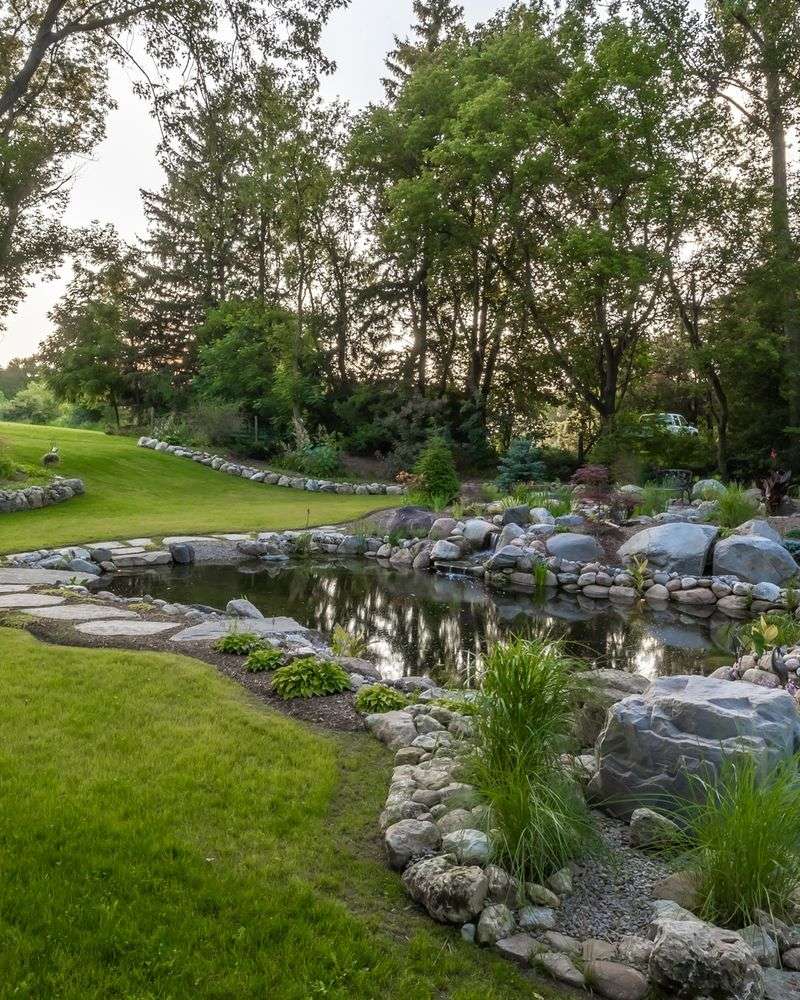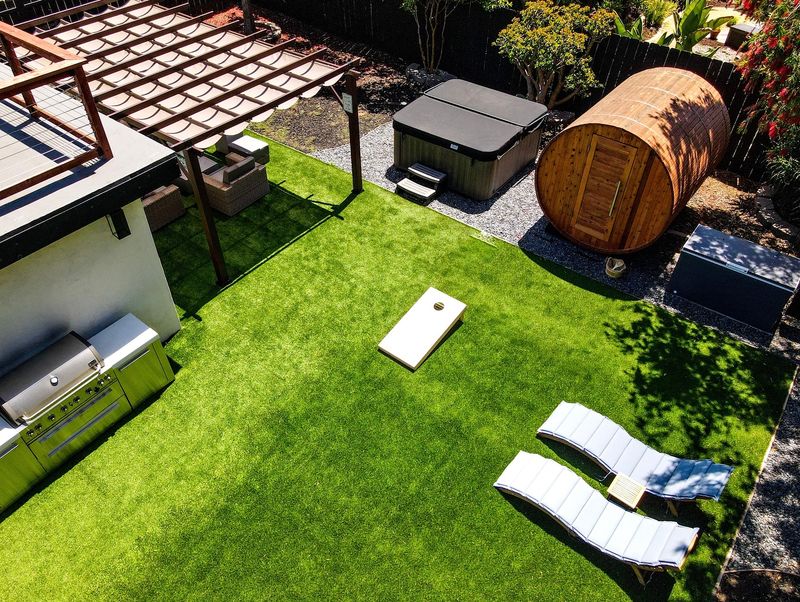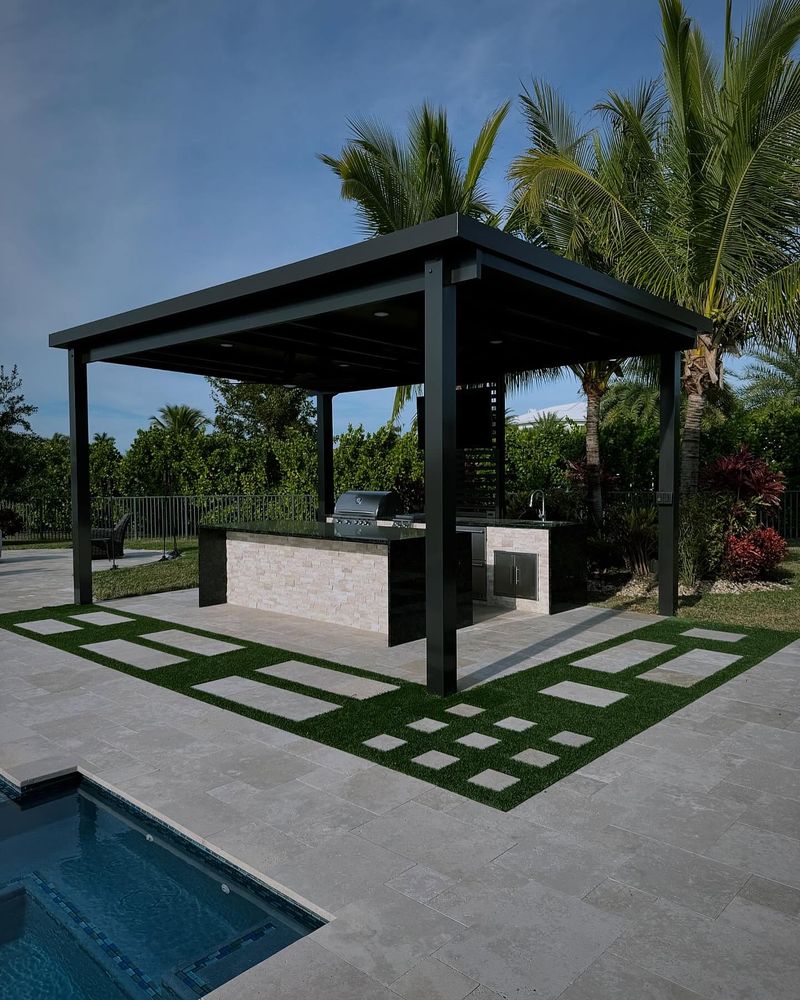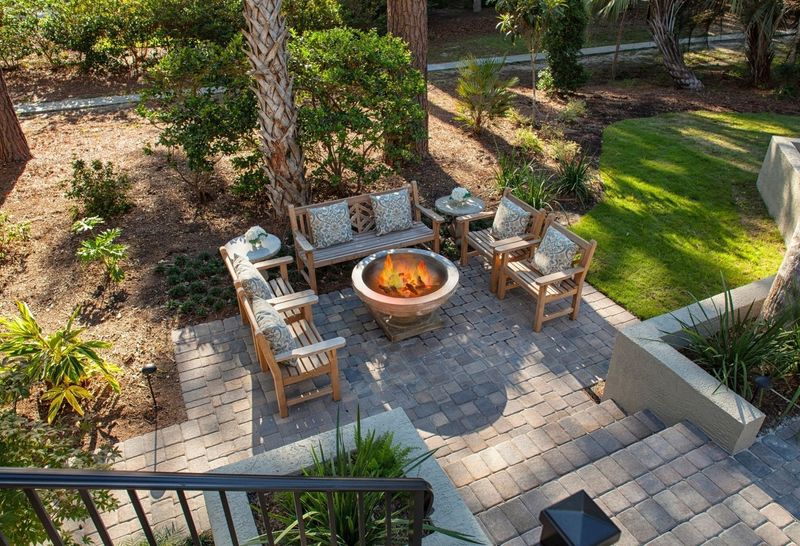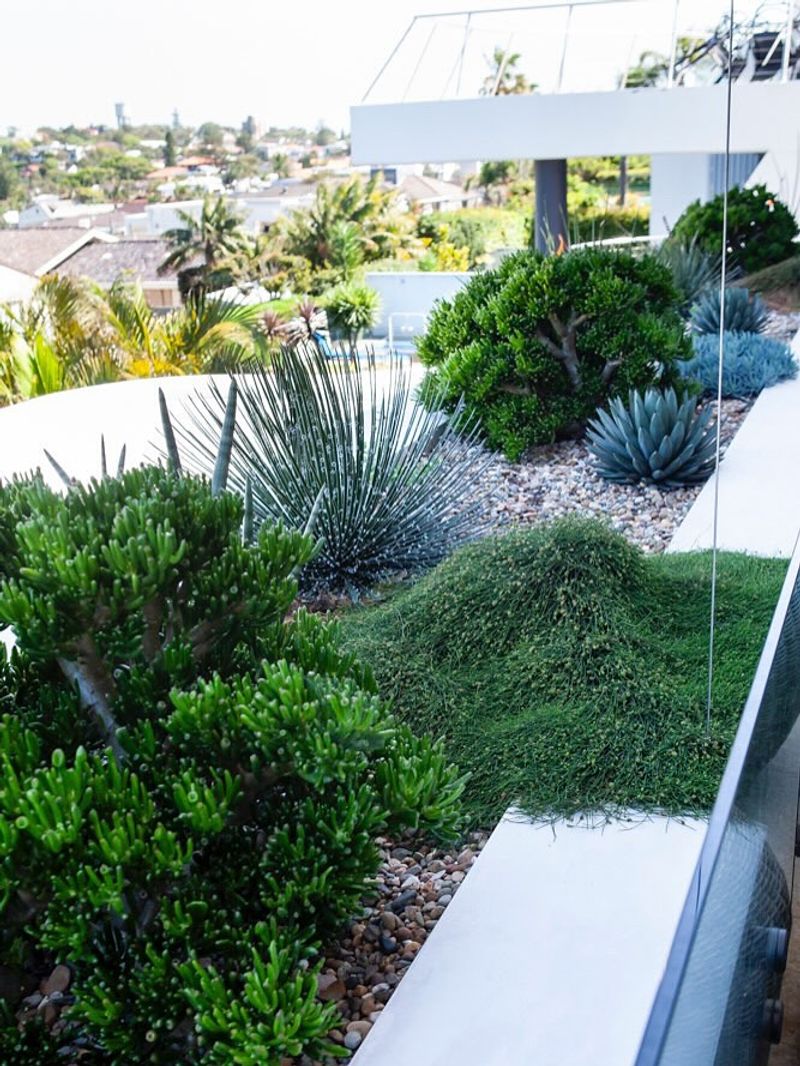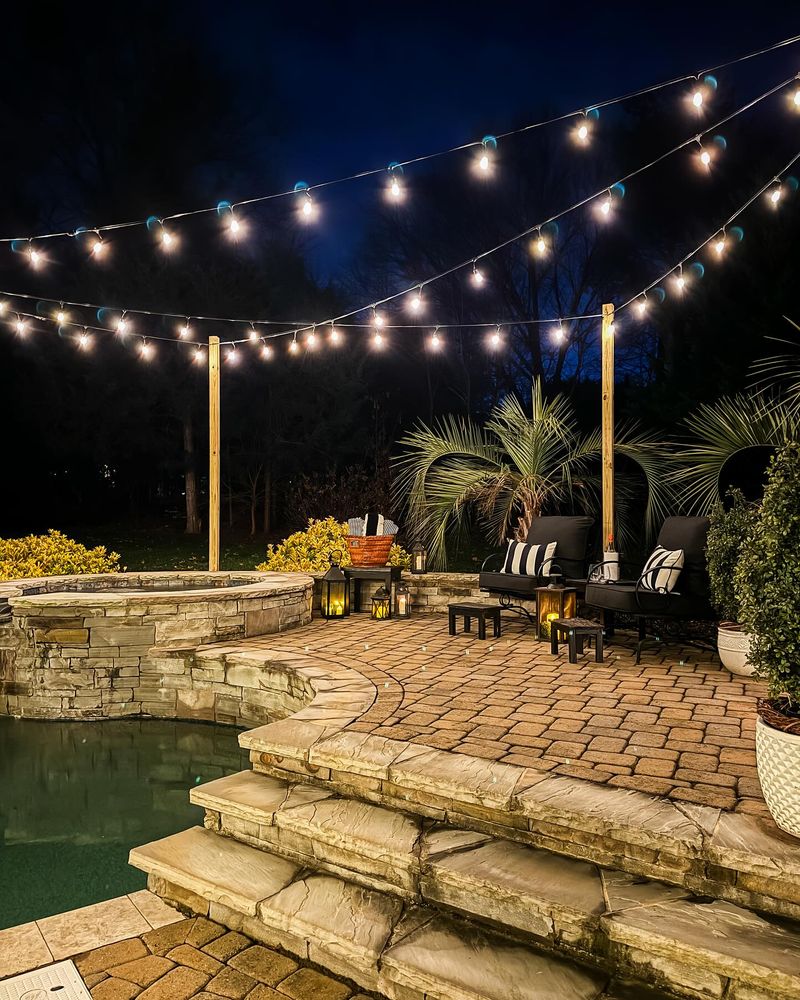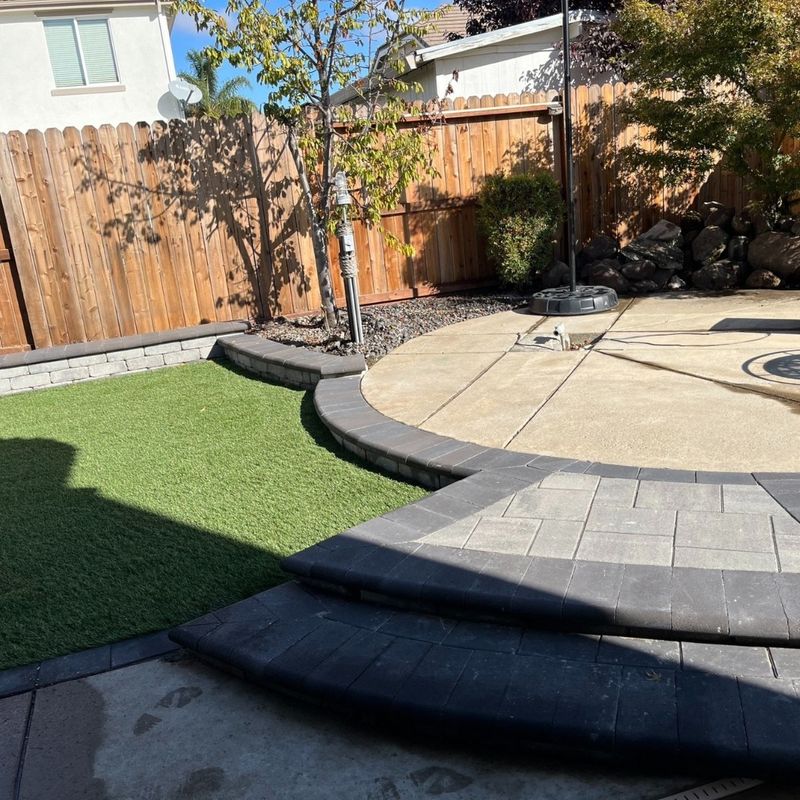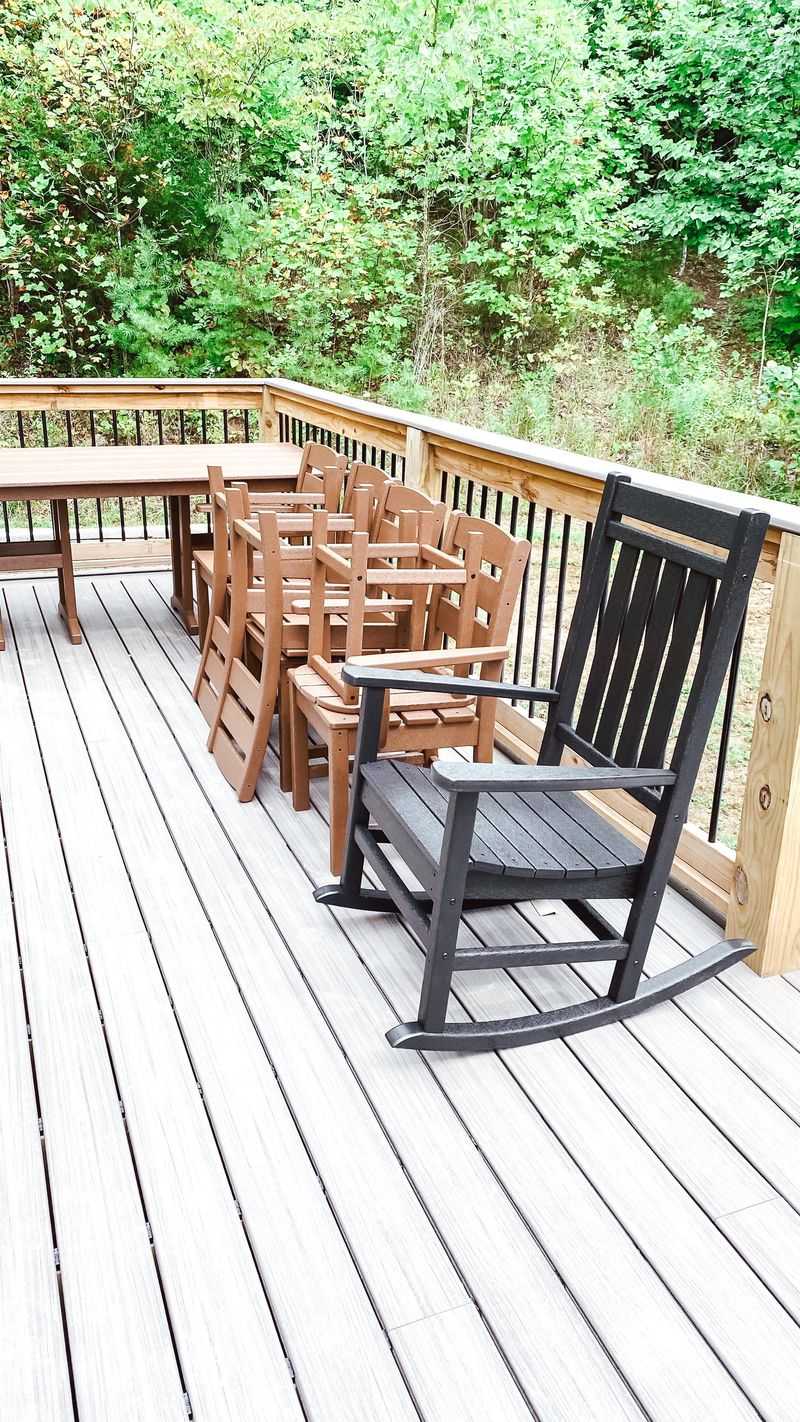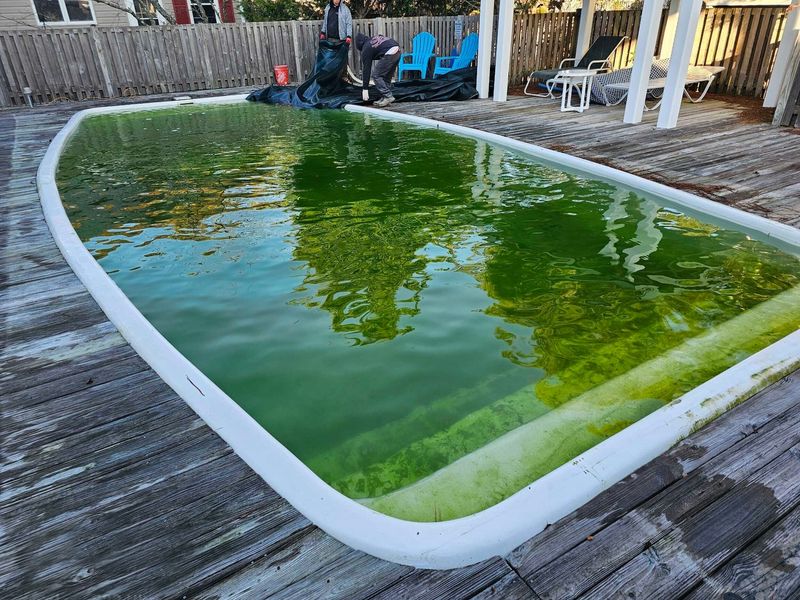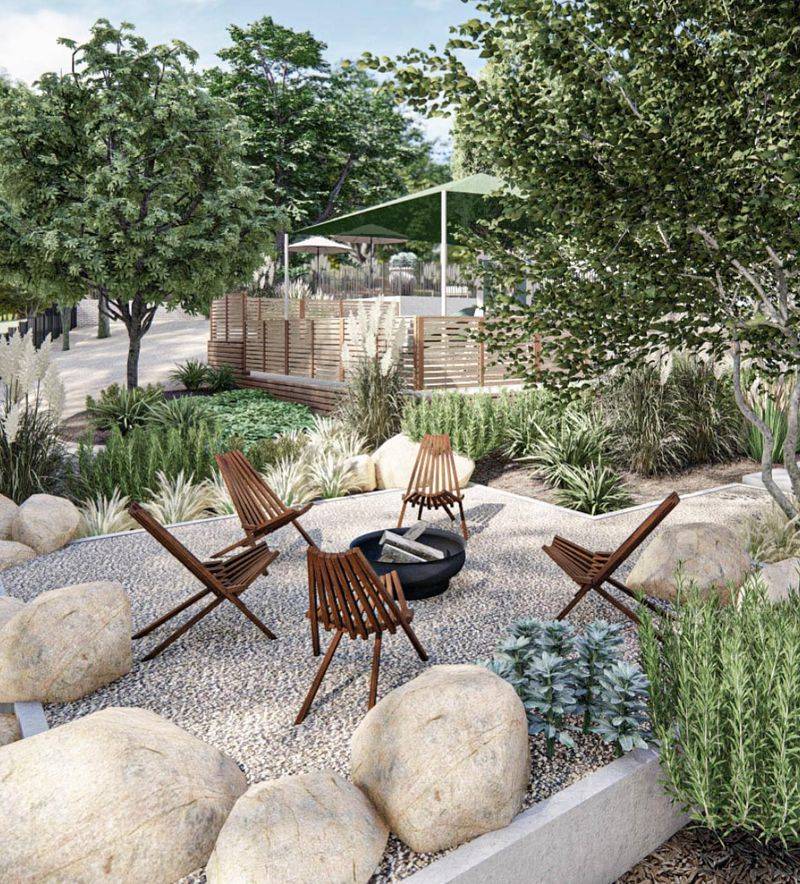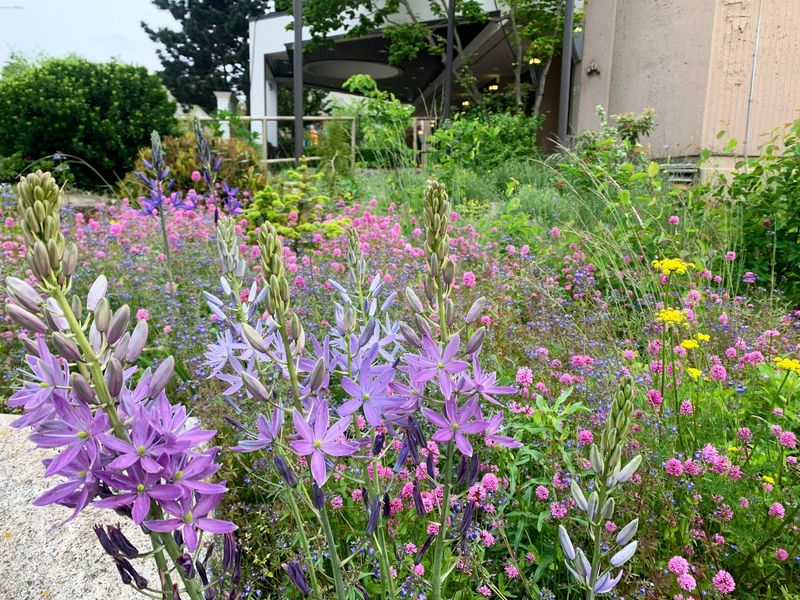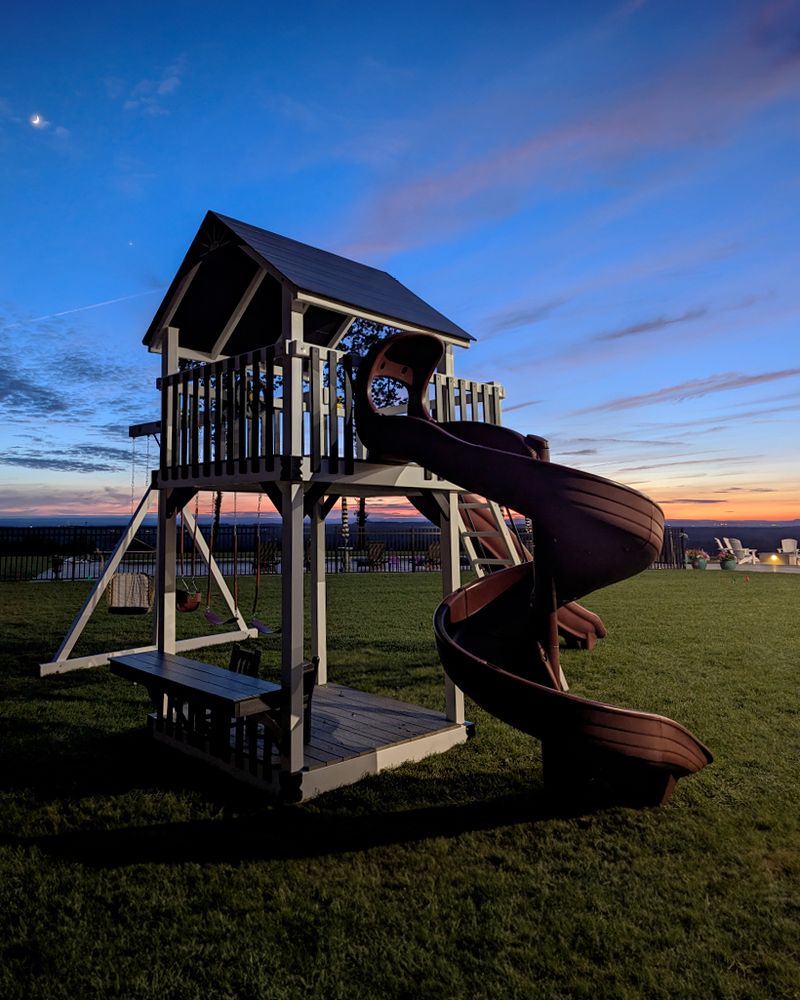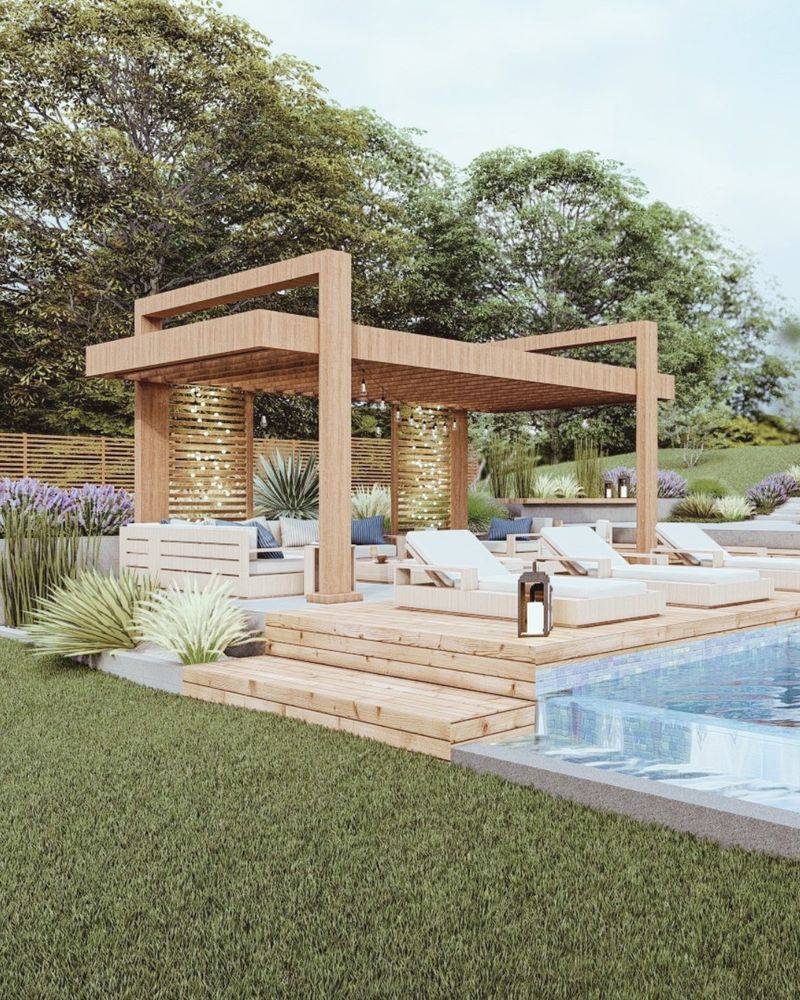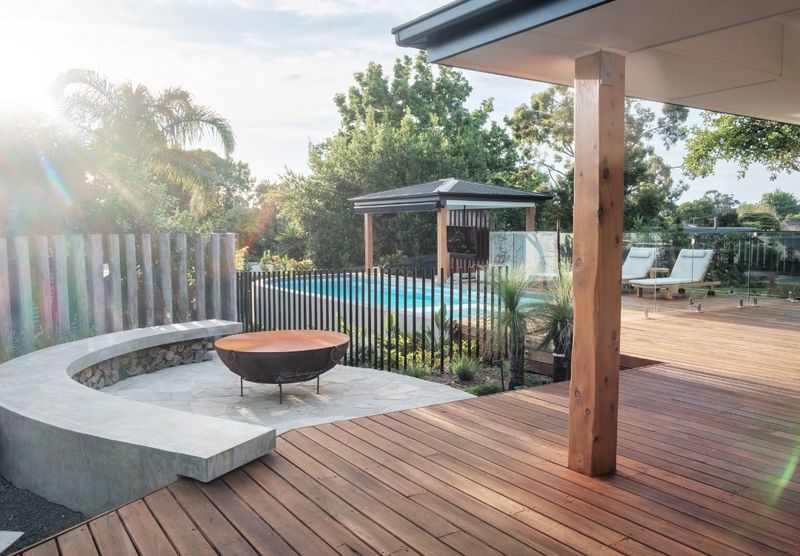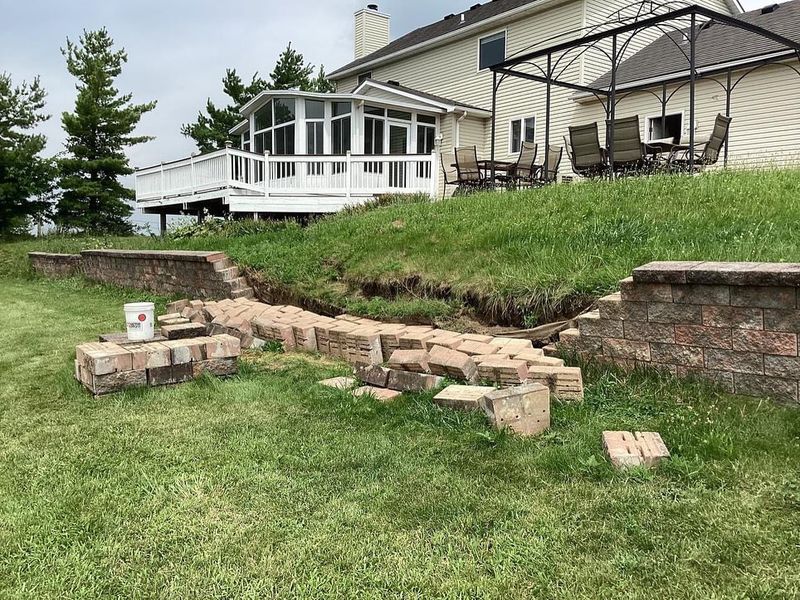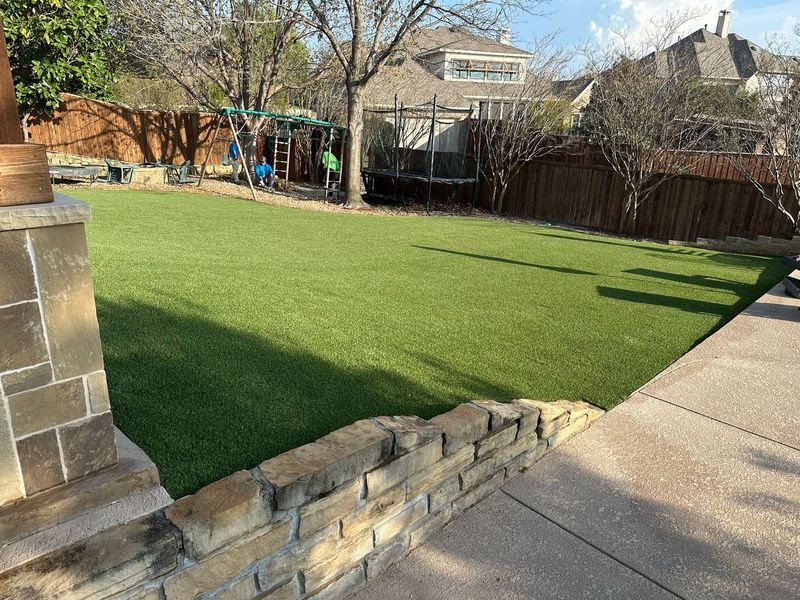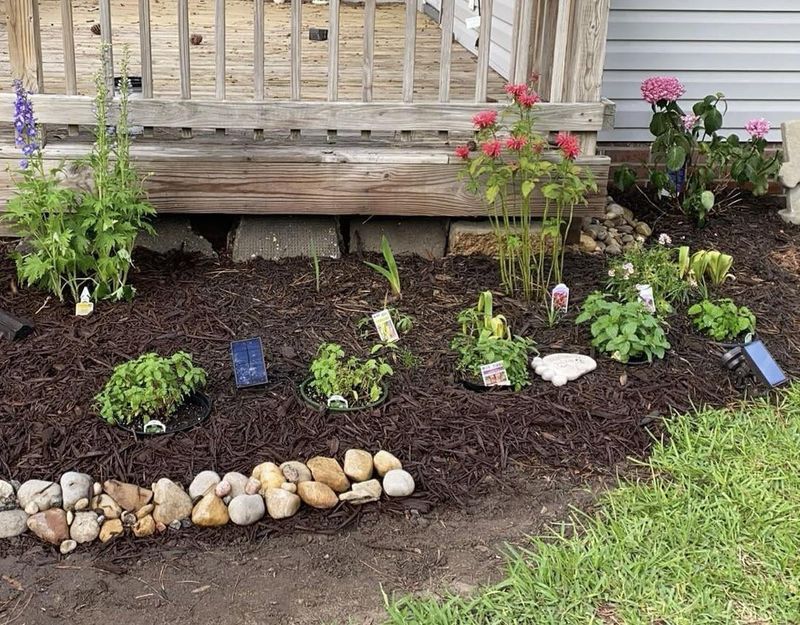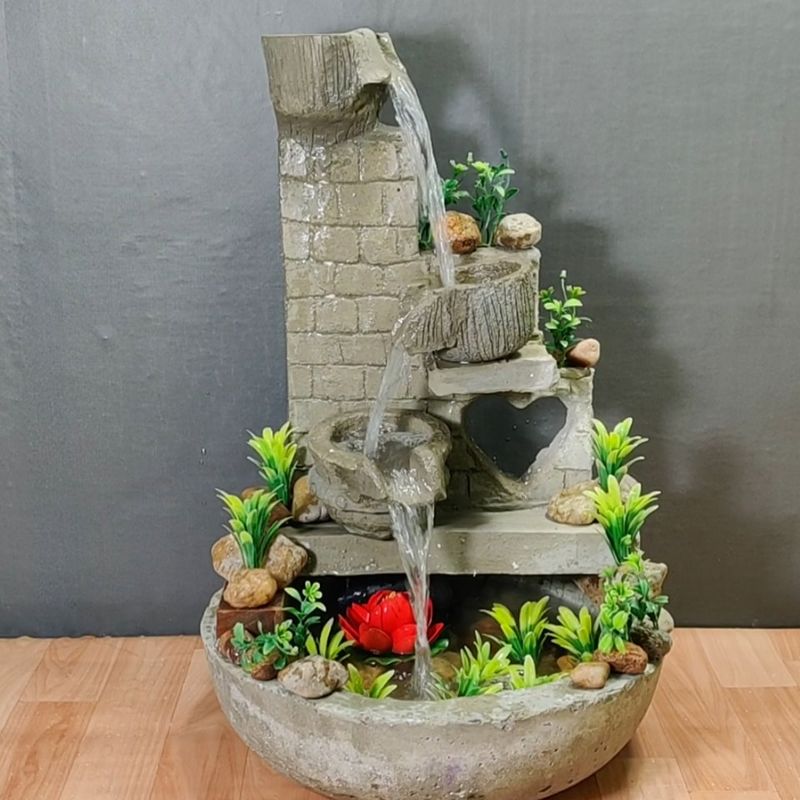Sprucing up your backyard should be fun, but some design moves can turn into costly regrets. I’ve made a few backyard blunders myself, and trust me, you don’t want to repeat them.
Creating a space that’s both beautiful and practical takes a bit of know-how—and avoiding these common pitfalls will save you time and money.
Let’s look at the backyard fails that just aren’t worth the hassle. You deserve an outdoor space that feels just right, without the stress!
1. Oversized Water Features
Installing a massive pond or waterfall might seem like a dream addition, but these features often become maintenance nightmares. The equipment alone costs thousands, not counting regular cleaning and chemical treatments.
Wildlife may take over your pond while algae blooms turn clear water into green soup. Plus, many homeowners underestimate water and electricity costs that can add hundreds to yearly bills.
2. Cheap Artificial Turf
Bargain synthetic grass quickly reveals its true colors under real-world conditions. The plastic blades flatten within months, creating an unnatural, worn-out carpet effect that screams ‘fake’ to everyone who visits.
During summer, cheap turf becomes unbearably hot, sometimes reaching temperatures that can burn bare feet. The material also traps pet odors and requires more maintenance than sellers typically admit.
3. Elaborate Outdoor Kitchens
Those magazine-worthy cooking stations with built-in refrigerators, pizza ovens, and granite countertops can easily cost $15,000 to $50,000. Reality check: most families use these elaborate setups just a handful of times per year.
Appliances exposed to the elements deteriorate quickly despite weatherproofing claims. Many components require winterizing in colder climates, adding annual maintenance costs and hassle to your outdoor cooking dream.
4. Impractical Fire Pits
Those stunning fire features you spotted on Pinterest often ignore practical realities. Poorly placed pits become smoke traps when winds shift, sending guests running with watery eyes and smelly clothes.
Many homeowners install fire features too close to structures or trees, creating serious safety hazards. Wood-burning options require constant fuel supply and cleaning, while gas versions need professional installation and ongoing propane costs.
5. Trendy Plant Selections
Filling your garden with this year’s hottest plants might earn temporary bragging rights but often leads to expensive replacements. Many trendy varieties aren’t suited for local growing conditions and struggle to survive beyond a single season.
Exotic options typically demand special care, fertilizers, and protection from local pests. Native alternatives require fraction of the maintenance while providing better wildlife habitat and natural resistance to local climate challenges.
6. Excessive Landscape Lighting
Over-illuminating your yard wastes electricity and creates light pollution that annoys neighbors and disrupts local wildlife. Those dozens of solar lights lining every path quickly lose their charm when half stop working after the first rainy season.
Cheap fixtures corrode within months in outdoor conditions, leaving your yard dotted with broken plastic. Strategic lighting using fewer, higher-quality fixtures creates more elegant ambiance while consuming less power and requiring fewer replacements.
7. DIY Paver Installations
Weekend warriors often underestimate the precision required for lasting paver patios. Without proper base preparation, even expensive stones shift, creating trip hazards and weed-friendly cracks within months.
Improper drainage causes pavers to sink in some areas while rising in others after freeze-thaw cycles. Professional installation costs more upfront but prevents the expense of tearing out and rebuilding a failed DIY project that looks increasingly amateur with each passing season.
8. Single-Season Furniture
Those budget patio sets with thin cushions and lightweight frames might look appealing in store displays but quickly deteriorate under real outdoor conditions. Fabrics fade within weeks of sun exposure while frames bend or break under normal use.
Cushions absorb moisture and develop mold despite manufacturer claims. Investing in commercial-grade furniture with proper outdoor ratings costs more initially but provides years of use without the frustration and waste of annual replacements.
9. Neglected Swimming Pools
Installing a pool without understanding maintenance requirements creates an expensive eyesore. Many homeowners discover too late that weekly upkeep costs hundreds in chemicals, equipment, and energy bills.
Underused pools become mosquito breeding grounds and safety hazards while still requiring maintenance. Professional services cost $2,000-$5,000 annually, while DIY maintenance demands consistent time commitment that many busy families simply cannot sustain throughout swimming season.
10. Mismatched Design Elements
Creating a backyard that resembles a showroom floor with unrelated styles creates visual chaos rather than harmony. Japanese zen gardens clash with Mediterranean statuary while rustic farm elements fight with modern minimalist furniture.
This piecemeal approach appears random and unplanned, reducing property appeal. Choosing complementary elements within a consistent design language creates a cohesive outdoor space that feels intentional and professionally designed rather than haphazardly assembled from clearance sales.
11. Inadequate Drainage Solutions
Ignoring water flow patterns leads to pooling that damages structures and creates mosquito breeding grounds. Many homeowners install patios and gardens without considering where rain will go during heavy storms.
Water trapped against foundations causes expensive structural damage while soggy lawn areas become unusable mud pits. Professional grading and drainage installation might seem expensive initially but prevents far costlier water damage repairs to your home and landscape investments.
12. Invasive Plant Species
Those fast-growing privacy screens often become backyard monsters that destroy fences, crack foundations, and invade neighboring properties. Bamboo, English ivy, and certain vines quickly escape planned boundaries and become nearly impossible to eradicate.
Removal often requires professional intervention costing thousands. Native alternatives provide similar benefits without the invasive tendencies, while maintaining better relationships with neighbors who won’t have to battle your escaped greenery for years to come.
13. Oversized Playground Equipment
Massive play structures consume disproportionate yard space while children typically outgrow them within a few years. These bulky installations often sit unused while creating maintenance headaches and safety concerns.
Weather damage makes wooden components splinter while metal parts rust, requiring regular upkeep. Modular options that can evolve with children’s changing interests make better investments than permanent structures that become eyesores once kids lose interest in basic sliding and climbing.
14. Insufficient Shade Planning
Creating beautiful outdoor living spaces without adequate shade renders them unusable during peak daylight hours. Patios and seating areas exposed to direct sun become too hot for comfort during summer months.
Many homeowners add shade solutions as afterthoughts, resulting in awkward placements and ineffective coverage. Integrating trees, pergolas, or retractable awnings during initial design ensures your outdoor investments remain comfortable and usable throughout changing seasons and different times of day.
15. Overdone Hardscaping
Covering your entire yard with pavers, concrete, and stone creates a sterile, heat-radiating environment that feels more like a parking lot than a natural retreat. These hard surfaces prevent rainwater absorption, contributing to runoff problems.
Summer temperatures rise significantly in hardscape-dominant yards, increasing cooling costs for adjacent homes. Balancing hard surfaces with adequate green space creates more inviting outdoor environments while supporting beneficial insects, birds, and natural cooling through plant transpiration.
16. Poorly Constructed Retaining Walls
Amateur wall construction frequently fails within years, creating dangerous collapses and expensive repairs. Many DIY attempts lack proper drainage behind walls, causing pressure buildup that eventually forces even substantial structures to lean or crack.
Inadequate footings compound these problems, especially in regions with freeze-thaw cycles. Professional engineering for walls over 3 feet tall might seem unnecessarily expensive initially but prevents catastrophic failures that can damage property and potentially injure family members.
17. High-Maintenance Lawns
Attempting perfect golf-course turf in unsuitable climates creates a money pit of fertilizers, pesticides, and water bills. Many homeowners underestimate the weekly maintenance requirements that consume weekends throughout growing season.
Chemical treatments harm beneficial insects while potentially exposing family and pets to toxins. Drought-tolerant alternatives like native meadows, ground covers, or regionally-appropriate grass varieties dramatically reduce maintenance demands while creating more environmentally friendly and uniquely beautiful outdoor spaces.
18. Ineffective Pest Control Methods
Those ultrasonic repellers and novelty pest solutions rarely deliver on their promises despite clever marketing. Homeowners waste hundreds on ineffective gadgets while mosquitoes, ticks, and other pests continue making outdoor spaces unusable.
Bug zappers primarily kill beneficial insects while barely impacting mosquito populations. Integrated pest management using proven methods like removing standing water, strategic plantings, and targeted treatments provides more effective results than gimmicky solutions promising miraculous results.
19. Unrealistic DIY Water Features
Those simple-looking Pinterest fountain projects quickly become complicated plumbing nightmares for amateur installers. Leaks develop at connection points while pumps burn out from improper sizing or debris clogs.
Many DIY water features sit abandoned after initial failures discourage owners from continued repairs. Starting with small, professionally designed water elements allows mastering basic maintenance before committing to elaborate installations that require specialized knowledge of filtration, water chemistry, and seasonal care.

